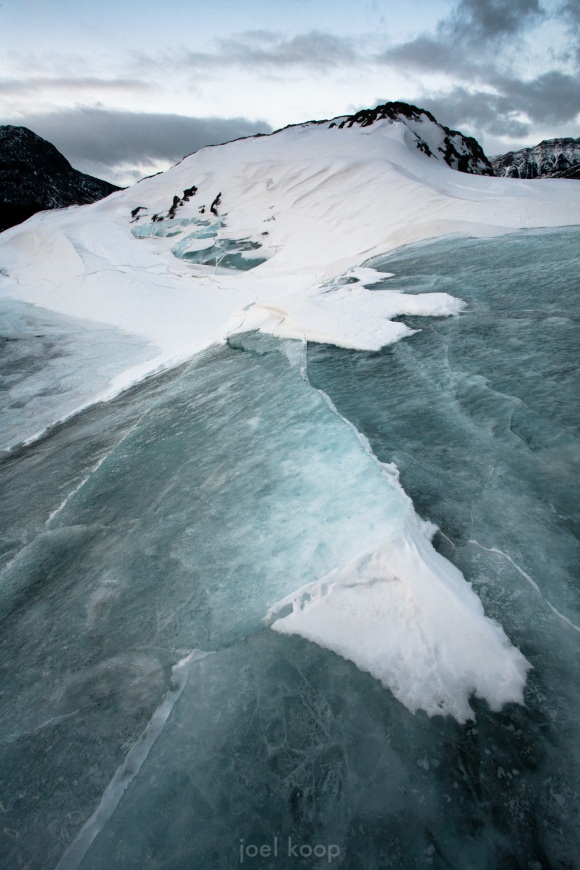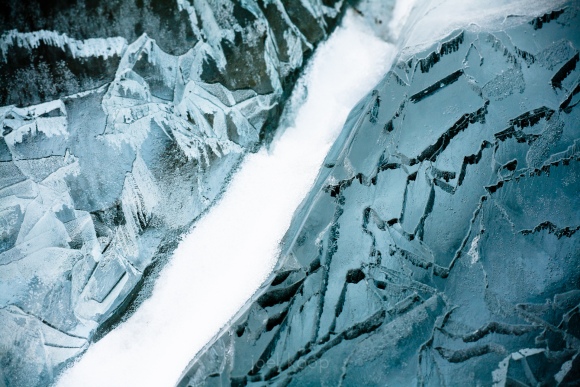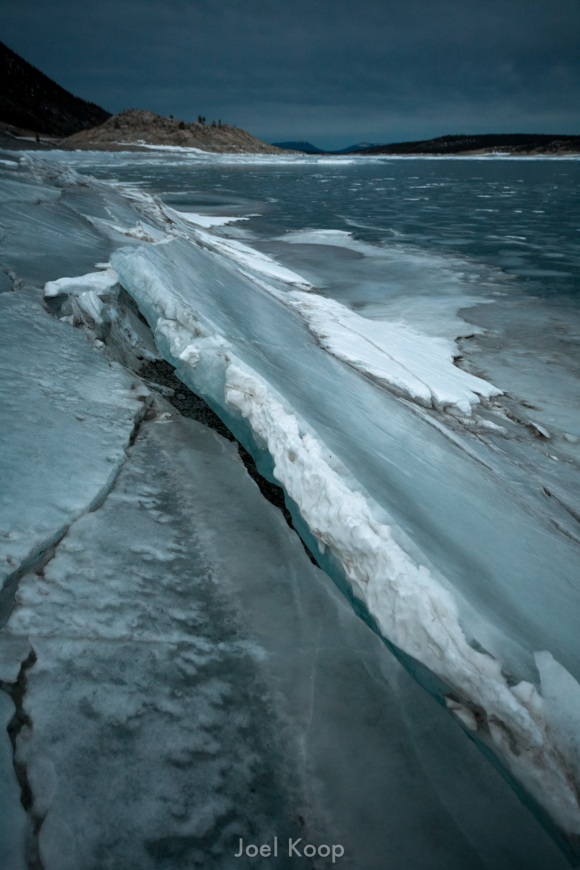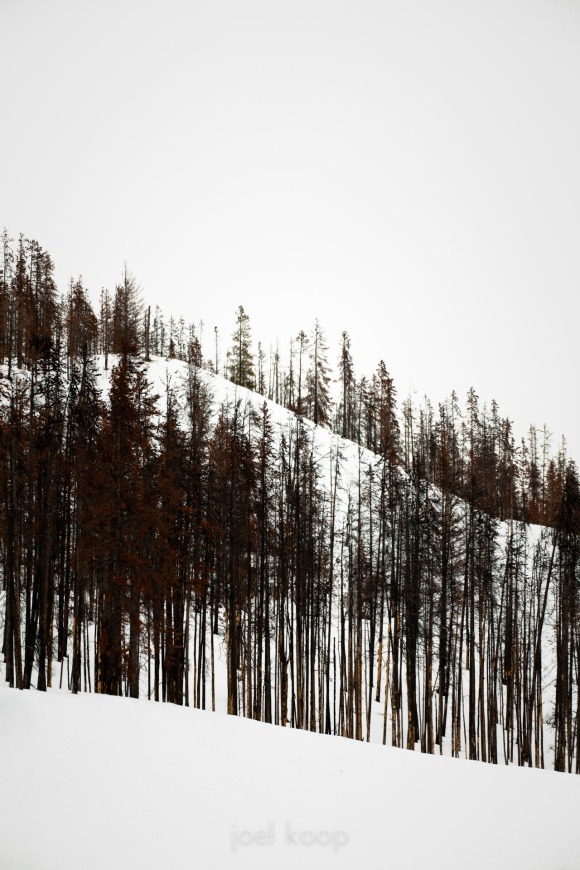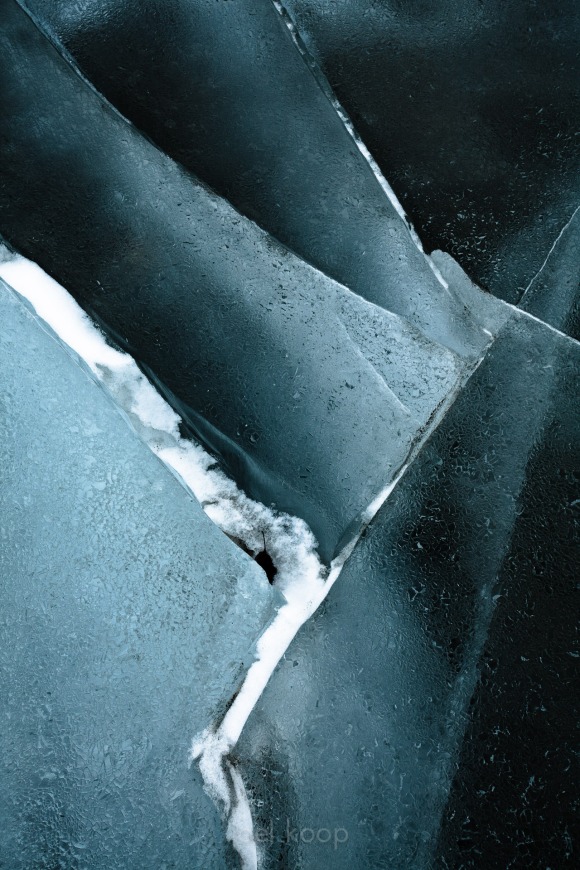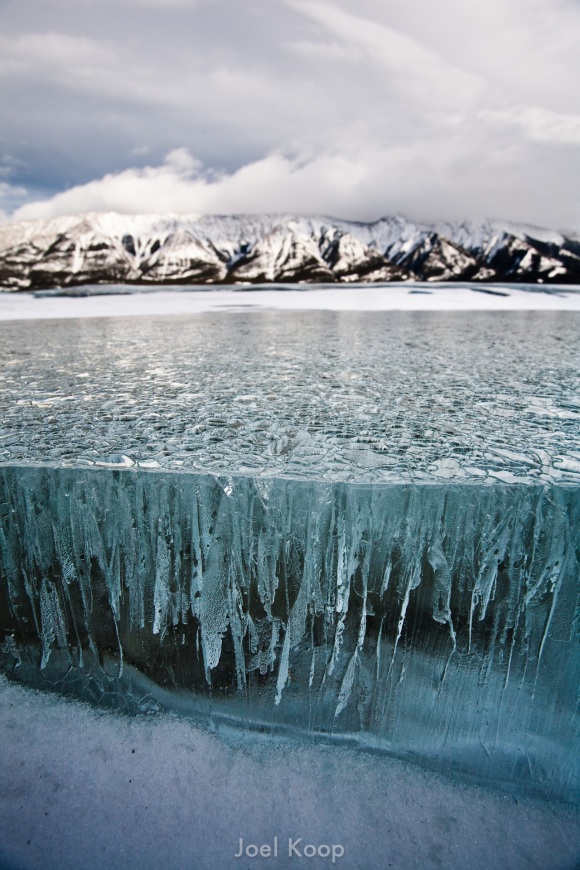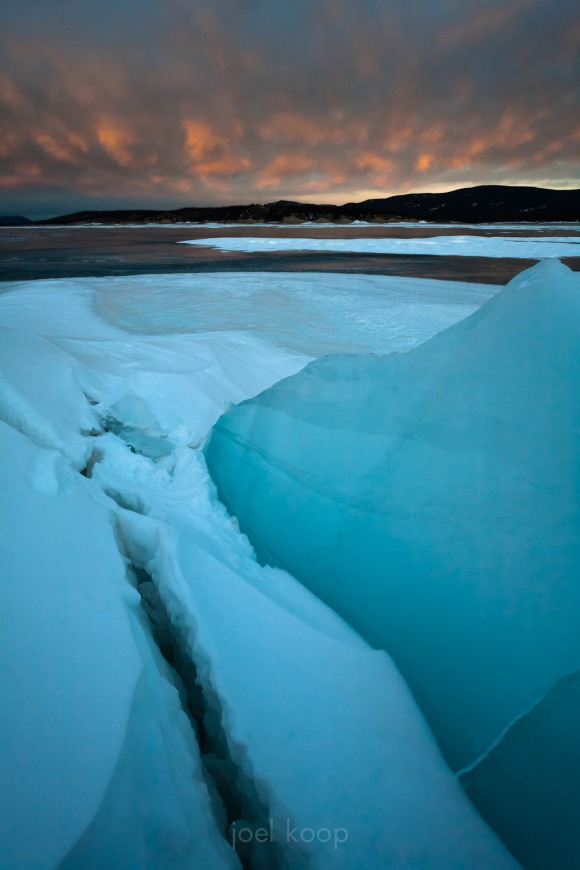I’ve seen plenty of photos of the lake in winter before. The first photos I saw were on Darwin Wiggett’s blog. He takes groups of photographers out on the lake, so it’s starting to be a pretty popular place for photography. And with good reason—the ice patterns are incredible, the snow is either non-existant or drifted due to very strong winds.
About a week before I left, I looked at the forecast and saw positive temperatures. This is crazy for Alberta in January, so I figured I should take advantage of it. I had a few days off in the middle of the week, so I left Tuesday morning, arrived late in the afternoon, and parked beside the lake at the first semi-secluded place I found. I was sheltered from the winds (or so I thought) and had pretty good access to the lake. So I set out down the bank. The last section was steep ice—I would have been stuck without the crampons I’d purchased the day before. I got down to the lake and hiked (gingerly at first) out to a point of land. I was cautious about the thickness of the ice, but it turned out to be frozen several feet down.
The ice at the edge of the lake on the way up to my car.
I had a lovely evening on the lake, and after it got dark, I headed back to the car for night. I’ve set up my car for sleeping quite comfortably. The back seat folds down completely flat, I have my camping mattress on that and even a memory foam topper to add that extra bit of luxury. The temperature that night only went down to -7, which is quite pleasant for winter camping, and I expected to sleep well. I didn’t account for the wind. All night, even sheltered by the wall of rock, the wind was trying to tip over my car. It was like a constant earthquake for 8 hours. I should have just moved, but it’s hard to find another good spot to sleep beside the road after dark. I didn’t sleep much, so I dozed as well as I could, then got up at 6:30 (the sun rises at 8:30), and decided to get some night photos.
This turned out to be impossible. With my rubber footed tripod skittering across the ice, me being blown off balance even with my crampons on, and my camera bag strap humming in the wind, I decided to wait it out till sunrise behind a snowdrift. The wind was a little less here, and I could actually keep my hood up and hear myself think. As the sun started to rise, I ventured out, got a few photos, and then headed back to the car in hopes of finding a more sheltered spot.
One of the few sunrise photos I managed to get:
A further account of this trip and more photos can be found in this post.
